- Home
- Paula Byrne
The Real Jane Austen Page 10
The Real Jane Austen Read online
Page 10
Jane Austen would have felt particular pleasure and pride when she received her five-volume set of Camilla in 1796. Not only was there the anticipation of a read as good and as lengthy as Cecilia. There was the added frisson of seeing her own name in the list of subscribers, as well as a personal connection: her godfather Samuel Cooke was a close friend of Burney.21 The Reverend Samuel Cooke was married to Mrs Austen’s first cousin, who shared the name Cassandra Leigh. She was the daughter of Theophilus Leigh, Master of Balliol College, Oxford. The Cookes lived in a village in Surrey called Great Bookham. Opposite them in a little house called The Hermitage lived Fanny Burney, now married, as John Thorpe in Northanger Abbey puts it, ‘to an emigrant’, General Alexandre d’Arblay. Burney had first met her future husband at Juniper House, a former coaching inn nestled in a valley at the foot of Box Hill, that had become home to a group of émigrés who had fled from revolutionary Paris.
Fanny Burney
Fanny was a frequent visitor to the Cookes. She didn’t really like their teenage daughter, Mary, whom she found ‘stiff and cold’, but she was very fond of Cassandra Cooke, who was herself a novelist. It may have been Cassandra who asked Jane to be a subscriber to Camilla. Burney lived close to the Cookes from 1793 to 1797, whereupon she moved near by to build Camilla Cottage. Samuel Cooke baptized Burney’s only and beloved son, who was named Alexandre after his father. Jane Austen later joked about marrying him, so it is clear that she and her sister gossiped about the d’Arblay family life.
The Cookes particularly admired Mansfield Park, and Samuel wrote to Jane Austen to tell her so, observing that he would not like Madame d’Arblay’s new novel (The Wanderer, published the same year) so well. We know that Jane Austen visited her godfather in Surrey. The topography of the fictional Highbury in Emma bears some resemblance to that of Great Bookham, and there can be no doubt that Jane Austen knew Box Hill. She would have discussed novels when she spent time with Cassandra Cooke. The publication of Cassandra’s novel Battleridge in 1799 might have helped to persuade Jane Austen that she too could be a published author. She may well have read the novel in manuscript.
Jane wrote to her sister Cassandra in October 1798, ‘Your letter was chaperoned here by one from Mrs Cooke, in which she says that Battleridge is not to come out before January; and she is so little satisfied with Cawthorn’s dilatoriness that she never means to employ him again.’22 Cawthorn, of Cawthorn and Hutt in Cockspur Street, London, was Mrs Cooke’s publisher. Here, Jane Austen shows her interest in her cousin’s publishing problems. Cassandra Cooke’s openness in discussing such matters suggests that the Austens were supportive of her attempts to be a published novelist. Later, as we will see, Jane experienced similar frustrations with her first publisher.
Jane and her Leigh cousins had loyal Cavalier ancestors during the Civil War. In 1642, Sir Thomas Leigh had entertained King Charles I at Stoneleigh for three days when the gates of Coventry were shut against him. The Leighs were heavily fined by Cromwell’s government but held on to their lands and their royalist sympathies.
Cooke’s preface to Battleridge: An Historical Tale claims that the novel was based on a true story set in the interregnum. The chief character is the historical figure Doctor Scott, who was a favourite of Charles I but manages to earn the admiration of Oliver Cromwell (who appears as a character in volume one). Battleridge actually tells two different tales, both allegedly based on ‘facts’. The main story concerns the abduction and imprisonment of a young girl whose family fortunes are restored by the recovery of a lost deed which has been locked into the false bottom of a cedar chest. It has typically Gothic features: madness, old castles, lost documents, cruel fathers and sons, beautiful but crazed maidens, wise divines. In her preface, Cooke acknowledges the novels of Goldsmith, Richardson and Burney as exemplars for not representing their heroines as ‘angels’, and Mrs Radcliffe as the ‘Queen of the tremendous’. Cooke also writes that she was advised by friends to enlarge her book by adding a second ‘Scottish story founded on fact’. Battleridge is the type of Gothic novel parodied in Northanger Abbey. Austen certainly seems to make teasing use of it at various points. For example, Catherine Morland’s tomboyish taste for baseball and cricket is a playful echo of a male character’s complaint on the second page of Battleridge: ‘No more cricket, no more base-ball, they are sending me to Geneva.’ The novel’s pro-Stuart sympathies would, nevertheless, have appealed to Jane Austen, as they would to Mary Leigh, Cassandra Cooke’s sister, who wrote a history depicting the Leigh family’s connections with and support for the Stuarts.23
Jane Austen also had another cousin novelist on the Leigh side of the family. She was Cassandra Hawke, who wrote the well-reviewed sentimental novel Julia de Gramont (1788)24 and boasted of it, much to the irritation of Fanny Burney, who described it as ‘love, love, love, unmixed and unadulterated with any more worldly materials’.25 Cassandra Hawke’s sister Elizabeth described her as being ‘never without a pen in her hand; she can’t help writing for her life’.26
Fanny Burney met these sisters, Elizabeth and Cassandra, at a party in 1782 and wrote a lengthy, satirical account in her journals. Burney was half amused and half irritated by Elizabeth, Jane Austen’s rattle of a cousin, who insisted on introducing her to Cassandra Hawke as a ‘sister authoress’. The account reads like a scene in a play, with the young Burney seated beside the two ‘Ladyships’. Elizabeth talks non-stop of writing, of the ‘hundreds of novels’ she has read, of plays and authoresses. Did Burney know any of the authoresses? Was not Evelina ‘the most elegant novel’ ever written? ‘Such a style … there’s a vast deal of invention in it! And you’ve got so much humour, too! Now my sister has no humour – hers is all sentiment.’ Was Burney, she enquired, ‘writing another novel’? ‘No, ma’am.’ ‘Oh, I daresay you are. I daresay you are writing one at this very minute!’
Burney, with typical sharp powers of observation, noted that, in contrast to her loud-mouthed sister, the pretty Cassandra was ‘extremely languishing, delicate, and pathetic; apparently accustomed to be reckoned the genius of her family, and well contented to be looked upon as a creature dropped from the clouds’.27 Little did the Leighs know that the real genius of the family would be a humble Hampshire cousin.
Presentation copy sent by Jane Austen to Maria Edgeworth
Jane Austen greatly admired the novelist Maria Edgeworth. When Emma was published, Austen asked John Murray to send a presentation copy to Edgeworth in Ireland. Maria knew Jane Austen’s aunt and uncle Mr and Mrs James Leigh-Perrot,28 but it is not clear that she made the connection, saying, ‘The authoress of Pride and Prejudice has been so good as to send me a new novel just published, Emma.’29 Edgeworth was not impressed with the novel, judging by the comments she made to her half-brother: ‘There was no story to it, except that Miss Emma found that the man whom she designed for Harriet’s lover was an admirer of her own – and he was affronted at being refused by Emma … and smooth, thin water-gruel is according to Emma’s father’s opinion a very good thing and it is very difficult to make a cook understand what you mean by smooth thin water gruel.’30
Edgeworth was a prolific writer of novels, essays and children’s fiction. Several of her novels, including the highly successful Castle Rackrent (1800), were set in Ireland, where she was brought up. Her novels of London society were Belinda (1801), Leonora (1806), Tales of Fashionable Life (1809–12) and Patronage (1814). Walter Scott claimed that he turned from poetry to fiction as a result of her influence.
Belinda, the novel that Jane Austen singled out for special praise through its mention in Northanger Abbey, was a controversial book. It depicted an opium-addicted (anti-)heroine and featured an inter-racial marriage between a farm-girl called Lucy and a Jamaican servant called Juba. By the third edition, Edgeworth removed this plot-line. Belinda herself comes close to marrying a rich West Indian Creole. The novel also depicts a character called Harriet Freke, who is closely based on the feminist Mary Wollstonecraft. Harriet dresses
like a man, is sexually aroused by Belinda and repelled by men. ‘I am a champion for the Rights of Woman,’ she tells the astonished hero, Clarence Hervey.31
The novelists that Jane Austen mentions in her own novels and surviving letters are probably only a fraction of the dozens whose works she knew. Her reading is very difficult to piece together because of her reliance on lending libraries. There was no doubt that she had strong opinions. She was unimpressed with the popular novel by Sydney Owenson (Lady Morgan), The Wild Irish Girl. In January 1809, as the Austens were preparing to move to Chawton, Jane wrote to Cassandra, ‘We have got Ida of Athens by Miss Owenson; which must be very clever, because it was written as the Authoress says, in three months. – We have only read the Preface yet; but her Irish Girl does not make me expect much. – If the warmth of her Language could affect the Body, it might be worth reading in this weather.’32
One author she disliked vehemently was Jane West. She was a conservative and didactic writer, not at all in Jane Austen’s style. She firmly believed that a woman’s place was in the home, declaring ‘My needle always claims the pre-eminence of my pen.’33 In September 1814, Jane Austen wrote to her niece Anna that she was ‘quite determined … not to be pleased with Mrs West’s Alicia de Lacy, should I ever meet with it, which I hope I may not. – I think I can be stout against any thing written by Mrs West. – I have made up my mind to like no Novels really, but Miss Edgeworth’s, Yours and my own.’34 The fact that she so despised the reactionary Jane West is a sure sign that Austen herself was no reactionary.
Her taste was for the rebels against literary convention: Burney with her plain or disabled heroines and her uncertain endings, Edgeworth with her feminists and her inter-racial marriages. Jane Austen’s novels were essentially heroine-centred novels of courtship, not conduct books disguised as novels in the manner of Jane West. They are coming-of-age novels in which guardians and parental figures are often flawed. The heroine is not taught a lesson: she learns from her own mistakes.
In a letter written from Bath in 1805, Jane Austen reflected on the fact that she was moving in very different company from that of an earlier visit: ‘What a different set are we now moving in! But seven years I suppose are enough to change every pore of one’s skin, and every feeling of one’s mind.’35 The self and the emotions evolve. We change, we grow through experience: that is what makes us human, and it is the process that the novel can track in more detail and with more nuance than any other creative endeavour. Catherine Morland, the Dashwood sisters, Elizabeth Bennet, Emma Woodhouse, Fanny Price, Anne Elliot: none of them is the same at the end of the story as she was at the beginning. It was Fanny Burney and Maria Edgeworth who led Jane Austen to see that the novel could be a medium for showing how seven years, or seventeen, were enough to change every pore of one’s skin and every feeling of one’s mind.
It has become fashionable in our own time to be dismissive of ‘Janeites’ who speak of Elizabeth Bennet, Mr Darcy and the rest as if they were real people, so it may come as a surprise to find that the supremely self-aware ironist Jane Austen considered, if playfully, her fictional creations as flesh and blood figures. In conversation with her family – as in her scribbled comment on the back of her copy of Camilla – she gave afterlives to the characters in her novels. She suggested that Jane Fairfax dies young in childbed, that Kitty Bennet marries a young clergyman and that the large sum of money Mrs Norris gives to William Price is One Pound. According to the family memoir, she thought of fictional characters as people she knew: ‘Every circumstance narrated in Sir Charles Grandison, all that was ever said and done in the cedar parlour, was familiar to her; and the wedding days of Lady L. and Lady G. were as remembered as if they had been living friends.’36
She loved Burney’s comic creations, such as the voluble leader of the fashionable world the ‘inimitable Miss Larolles’37 in Cecilia and the endearing but foolish Hugh Tyrold in Camilla.38 She shared that love with her dear sister. Allusions to Fanny Burney are a kind of affectionate code in her letters to Cassandra: ‘Take care of your precious self, do not work too hard, remember that Aunt Cassandras are quite as scarce as Miss Beverleys.’39 And again, ‘Give my love to Mary Harrison, and tell her I wish whenever she is attached to a young Man, some respectable Dr Marchmont may keep them apart for five Volumes.’40
By a strange coincidence, 1814 saw not only the publication of Jane Austen’s third novel, Mansfield Park, but also highly anticipated novels by her favourites Burney and Edgeworth – The Wanderer and Patronage. Walter Scott also published his first novel that year and Jane Austen joked to her niece Anna that he should have stuck to writing poetry: ‘Walter Scott has no business to write novels, especially good ones. – It is not fair. – He has Fame and Profit enough as a Poet, and should not be taking the bread out of other people’s mouths. – I do not like him, and do not mean to like Waverley if I can help it – but fear I must.’41 The fame of Scott did indeed eclipse that of Burney and Edgeworth, but they are the writers to read if one wants to get a sense of the models that inspired Jane Austen to become a novelist.
5
The Sisters
Two young ladies are dressed in white muslin.1 Their gowns are highwaisted, classical and flowing in the Regency style. Their hair is piled on top of the head and secured with beautiful headbands. One is wearing a pink shawl draped around her waist, the other a blue shawl. They resemble Grecian statues, but their pink cheeks and bright eyes show their vitality. One is holding an unfolded letter, from a suitor, or from a friend or relative. They are standing in the grounds of a stately home, sharing a confidence, perhaps related to the contents of the letter. They look as if they belong in a Jane Austen novel. They could be Marianne and Elinor Dashwood, Jane and Elizabeth Bennet, Julia and Maria Bertram, Emma and Isabella Woodhouse, Anne and Mary Elliot.
The young woman on the left is actually Charlotte Trevanion. A label attached to the portrait says that she ‘married 1803’. On the right is Georgiana Trevanion, ‘unmarried’. They are sisters-in-law. Charlotte, née Hosier, was born in 1783. She married John Purcell Bettesworth Trevanion, a major in the Dragoons, who was later described as ‘a gentleman who, to the pretensions of birth and lineage, to brilliant talents, the finest taste, and the most polished manners, united ardent and enlightened attachment to the cause of civil and religious liberty’.2 Charlotte did what was expected of young women of her class: she bore him children. Five of them, over seven years. In 1810 she suffered the fate of so many of her peers: she died in childbirth. In St Michael, Caerhays, the church near the family seat in Cornwall, there is a stone monument to her with weeping putti and a crocketed gable over a tomb chest with an elegiac inscription.
One of Charlotte’s sons, Henry Trevanion, married Georgiana Augusta Leigh, daughter of Lieutenant-Colonel George Leigh and his cousin Augusta, Lord Byron’s half-sister. Now it gets complicated: Augusta was the daughter of Lady Amelia Darcy and Captain ‘Mad Jack’ Byron, whose father Admiral ‘Fairweather’ Jack Byron had married into the Trevanion family. Colonel Leigh’s father, General Charles Leigh, had married Mad Jack Byron’s sister. As shorthand, one might say that almost everybody in the story was the cousin of everybody else. The tentacles of the Leigh family spread so widely that the marriage between General Leigh and Byron’s aunt means that Jane Austen and Lord Byron may have been distant cousins.3
But Henry Trevanion was unfaithful. He was passionately drawn to his wife’s younger sister Medora, who was almost certainly the child of an incestuous union between Byron and Augusta. Medora became pregnant and her father locked her up in an establishment in Maida Vale where upper-class girls went to have their illegitimate offspring. Henry arranged her escape and they eloped to Normandy, where their child was stillborn. They then removed themselves to a remote and decrepit chateau in rural France, where they passed for brother and sister. Medora became a Catholic and declared her intention of entering a convent. However, she got pregnant again. The Abbess was tolerant and found her
lodgings, where a daughter was born in 1834, christened Marie-Violette Trevanion – she was said to bear an uncanny resemblance to her probable grandfather Lord Byron. After a series of miscarriages, Henry Trevanion and Medora Leigh finally parted. In her autobiography, Medora wrote of Henry that he gave himself up to religion and shooting. The impoverished Medora travelled with her daughter (who eventually became a nun), married a Frenchman and died in 1849.
‘I have read The Corsair, mended my petticoat, and have nothing else to do,’ Jane Austen would write to Cassandra on 5 March 1814.4 Byron’s Corsair was the bestselling poem of the age – its first edition sold ten thousand copies on the day of publication. Its popularity owed not a little to the growing scandals around his name. Stories of his incestuous union with Augusta Leigh were beginning to circulate in society. In The Corsair, the hero’s beloved is called Medora.
The tangled story that flows from the sprightly figure of Charlotte Trevanion reminds us that it was common among the gentry in Jane Austen’s time for people to marry their cousins. And that it was not uncommon for a man to marry one sister and yet desire another. That brothers and sisters could have very intense, even incestuous, relationships. That an early death in childbirth was a very strong possibility for any young woman who married. And that letters are a key conduit of sisterly intimacy and affection.
Around the time that she turned twenty-one, Cassandra Austen became engaged to a young clergyman who was due to take a living in faraway Shropshire. Mrs Austen, preparing herself for the eventual removal of her two daughters, who were now entering the marriage market, rather despaired of the younger one’s prospects. To one of her daughters-in-law, she confided that ‘I look forwards to you as a real comfort to me in my old age, when Cassandra is gone into Shropshire, and Jane – the Lord knows where.’5

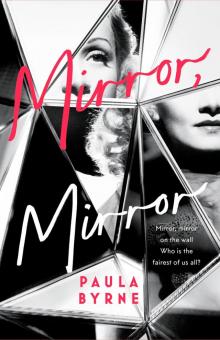 Mirror, Mirror
Mirror, Mirror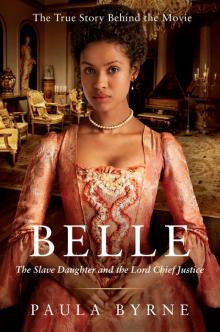 Belle
Belle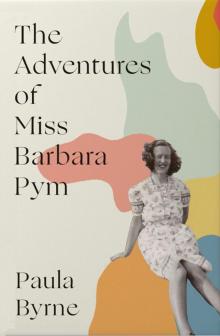 The Adventures of Miss Barbara Pym
The Adventures of Miss Barbara Pym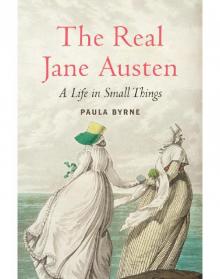 The Real Jane Austen
The Real Jane Austen Look to Your Wife
Look to Your Wife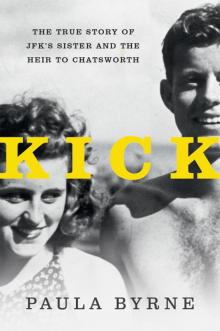 Kick
Kick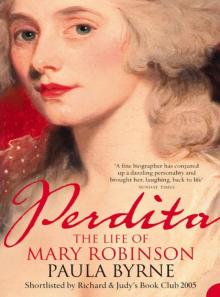 Perdita
Perdita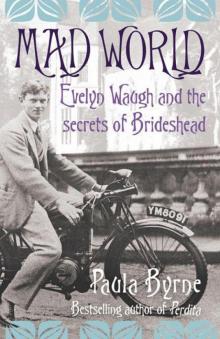 Mad World: Evelyn Waugh and the Secrets of Brideshead (TEXT ONLY)
Mad World: Evelyn Waugh and the Secrets of Brideshead (TEXT ONLY)